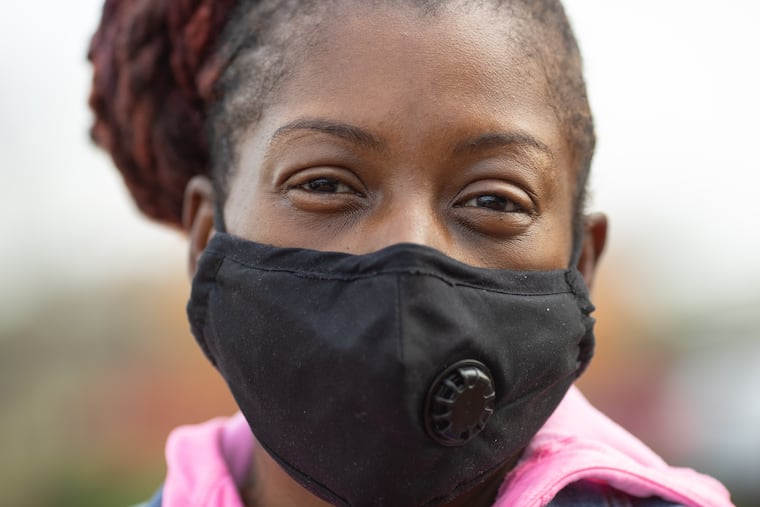Philly’s Black residents suffer the most from COVID-19 | Coronavirus Newsletter
And health-care workers are frustrated as people forego basic safety measures.

TL;DR: Nine months into the pandemic, the Philly area’s Black residents still face the highest infection rates of any group. And as COVID-19 cases continue to rise nationwide and in the region, health-care workers are growing increasingly frustrated by people ignoring safety warnings and foregoing basic precautions like wearing a mask and social distancing.
— Lauren Aguirre (@laurencaguirre, health@inquirer.com)
What you need to know:
🎁 Black Friday shopping is still very popular, but much of the shopping this year is happening online. This continues a trend that had started before the pandemic, though safety concerns have pushed more people away from visiting stores in person.
🦃 Crowds around Philly on Thanksgiving Day were limited this year compared to prior years. Our photographers documented the differences.
🥫 Nationwide, half of American families say they fear not having enough food in December. In Pennsylvania, 52% are “not very confident” they’ll be able to afford the food they need. In New Jersey, that number is 55%.
🩺 Philly-area hospitals may have to cut back on elective surgeries under a new state order designed to ensure that hospitals don’t run out of beds for COVID-19 patients.
😷 “I fear healthcare worker shortages as COVID surges this winter,” writes Dr. Patricia Henwood, who is leading the Emergency Medicine COVID-19 Task Force at Jefferson Health.
🏀 After Temple football canceled its season finale due to positive COVID-19 cases, it’s reported that Villanova basketball will play one more game at “Bubbleville” in Connecticut on Saturday.
📰 What’s going on in your county or neighborhood? We organized recent coverage of the coronavirus pandemic by local counties and Philly neighborhoods mentioned in the stories to make it easier for you to find the info you care about.
Local coronavirus cases
📈 The coronavirus has swept across the Philadelphia region and cases continue to mount. The Inquirer and Spotlight PA are compiling geographic data on tests conducted, cases confirmed, and deaths caused by the virus. Track the spread here.
Black and brown communities throughout the Philadelphia region continue to be among the hardest hit as the virus’ grip on the nation tightens. In both Philly and its suburbs, rates of infection are highest in communities where the majority of residents are people of color, an Inquirer analysis shows. Experts say there are systemic factors fueling these infection rates, such as intergenerational poverty. A major factor is the reality that in lower-income neighborhoods many people simply can’t work from the safety of their home.
In March, Philadelphians banged pots and pans and cheered daily to celebrate health-care workers fighting COVID-19 on the front lines. That doesn’t happen anymore. Maura Sammon, who works at Temple University Hospital, says she doesn’t want the hero worship, but health-care workers are still not getting what they need from the public. Sammons and her colleagues, who treat COVID-19 patients every day, are increasingly frustrated with seeing people go forward with large Thanksgiving gatherings and ignoring basic safety measures like wearing a mask and social distancing. “Of course I am feeling burned out, but I don’t have the time to be burned out,” Sammons said.
Helpful resources
Check out the current coronavirus guidelines in Pennsylvania and New Jersey. And here’s Philly, too.
If you’ve hit a COVID-19 wall, here are ways to cope.
The coronavirus is mainly transmitted through the air. Here’s how to tell if your ventilation is OK.
How does the virus affect your entire body?
Here’s what to know about traveling safely during the pandemic.
You got this: Holiday cheer
Let’s state the obvious: Celebrating the holidays this year won’t be the same. But you can still celebrate them safely, with Gritty Claus and all. Some events and attractions we know and love (like SEPTA’s “jolly trolley”) won’t be happening this year. But you don’t have to say “bah, humbug” to everything. There is the new “Winter on Broad Street: A Holiday Light Spectacular” that offers a socially distanced lights display, some activities and Gritty as Santa Claus. And there’s still plenty of great virtual events you can attend as well.
📅 Remember to check inquirer.com/calendar every Thursday for new events you can check out, virtually and in person.
👐 Missing touch in your life? So are we. Here’s what to do about it.
🎨 Here are 9 online classes in Philly to take this fall, including ballet, parkour, painting, acting, and more.
🙏 From toilet paper to first responders to dogs and grandkids, here’s what Inquirer readers are thankful for in 2020.
Have a social distancing tip or question to share? Let us know at health@inquirer.com and your input might be featured in a future edition of this newsletter.
What we’re paying attention to
CNN reports that nationwide, Thanksgiving Day saw more than 100,000 new COVID-19 cases — and more are expected as 20 states didn’t report their cases on Thursday.
What does 2021 look like for the pandemic? STAT charted out a possible road map for what to expect.
Pushed by the pandemic, Amazon is on a hiring spree and has added more than 400,000 employees in 10 months. The New York Times has more.
Enjoy getting our journalism through email? You can also sign up for The Inquirer Morning Newsletter to get the latest news, features, investigations and more sent straight to your inbox each morning Sunday-Friday. Sign up here.